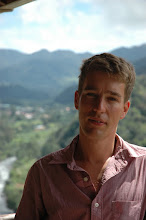Sandinistas
 It's easy as a tourist to imagine that the history of Central America is simply the story of the Aztecs and Mayans, culminating in their ultimate demise at the hands of the Spanish Conquistadors. You can choose to travel the isthmus visiting Pre-Colombian ruins along the way while basing yourself in a series of lovely old colonial towns laid out by the first wave of Spanish settlers and now reinventing themselves as relaxed backpacker destinations. However, if you stray off the established tourist routes a little, it isn't so difficult to bring yourself up to date with much more recent history of an equally dark shade.
It's easy as a tourist to imagine that the history of Central America is simply the story of the Aztecs and Mayans, culminating in their ultimate demise at the hands of the Spanish Conquistadors. You can choose to travel the isthmus visiting Pre-Colombian ruins along the way while basing yourself in a series of lovely old colonial towns laid out by the first wave of Spanish settlers and now reinventing themselves as relaxed backpacker destinations. However, if you stray off the established tourist routes a little, it isn't so difficult to bring yourself up to date with much more recent history of an equally dark shade.
Throughout Central America a legacy of the colonial period was the concentration of wealth and power in the hands of a narrow elite of old Spanish families. The majority of the population remained politically and socially marginalized, poor, ill educated and bereft of much opportunity to improve their lot. In the 1970s and 1980s a wave of popular protest against the old regimes sparked by the communist Sandinista Revolution in Nicaragua unleashed an evil epoch in Central American history as the region became caught up in the final phase of the Cold War. Oppressive military regimes with appalling human rights records were propped up by American money and military equipment as President Reagan became obsessed with the idea that only extreme measures were going to prevent a domino effect of countries turning communist. Somehow the land of the free lost sight of the fact that the will of the people is the ultimate litmus test of liberty, and chose instead to back the oligarches in pursuit of ideological principles. The result was a terrible and drawn out tragedy for the people.
In Honduras, the the US strategy paid off and the status quo was preserved, leaving a country which today seems unusually stable for the region, but where the most extreme social inequalities still persist. In Guatemala, new life was breathed into a forty-year civil war in which Government targeting of the large indigenous population of the country was a particularly unpleasant dimension.
Perhaps the saddest chapter of this history was played out in tiny El Salvador, a country ripped apart in the 1980s by a savage civil war in which an estimated 100,000 people died. We made a special flying visit to the country to visit the civil war museum at the former FMLN guerilla headquarters in the eastern mountains. The low-key museum aspires to be non-political in aim and explanation, acting simply as a repository of memory for all the people of a country scarred by war. Of course it's a difficult aspiration to achieve when the guides are themselves ex-guerillas, and it was interesting to observe that the leader of a visiting school party from an obviously wealthy school had a somewhat different take on the war to our guide. Wherever the truth lies, and museum doesn't hide the fact that human rights abuses were perpetrated by the guerillas as well as the Government, it's difficult to visit the place and not be profoundly moved by the terrible suffering of El Salvadorean people in this period. Massive US backing of the Government and military ultimately failed to defeat that FMLN who signed up to a UN brokered peace settlement in the early 1990s. What most saddened the people I spoke to was that having in a sense fought a successful revolution, the FMLN and other political leaders had lost sight of many of the aims and objectives that had carried them forward in the first place. Indeed, there is some irony in the fact that a country that suffered so much at the hands of US foreign policy, and lived to tell the tale, has fairly recently opted to adopt the dollar as its currency.
In Nicaragua, the illegal backing of the right wing Contras (remember Colonel Oliver North and the Iran-Contra scandal?) failed to dislodge the Sandinistas, but severely damaged a country that ought by rights to have been one of the richest in the Americas. The Sandinistas eventually disappeared at the ballot box as the people became disillusioned with Soviet Block style hardships and food shortages, even if literacy rates had soared. Today Nicaragua still looks badly battered by its experiences. There are giant potholes on all but the main roads and much evidence of war damage and untended decay in buildings outside of the old colonial tourist centres (which have now been patched up). Unemployment in Nicaragua is at a staggering 73%. Some stability does seem to have been achieved, the economy is improving at last and there is little nostalgia for the ideological extremism of the Sandinistas. Instead local people here in Granada tell me they want to enjoy the benefits of capitalism but with a strong social dimension so that its fruits are shared more widely amongst the people. Nicaraguans strike me as perhaps the loveliest people I have met in Central America and I can only hope their fortunes significantly improve in the years ahead.



0 Comments:
Post a Comment
Subscribe to Post Comments [Atom]
<< Home